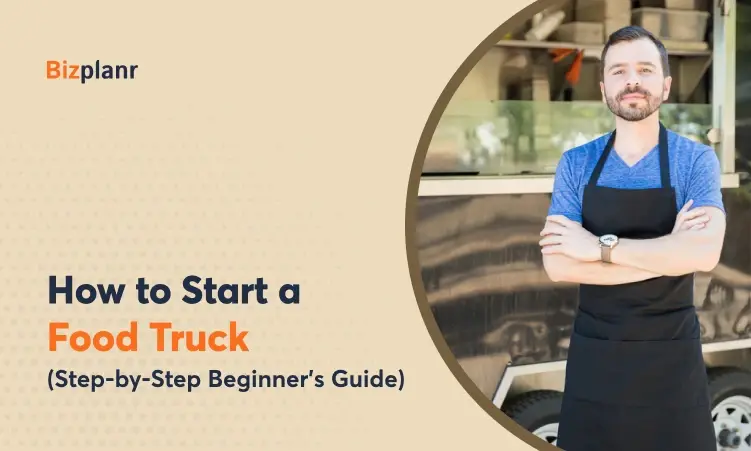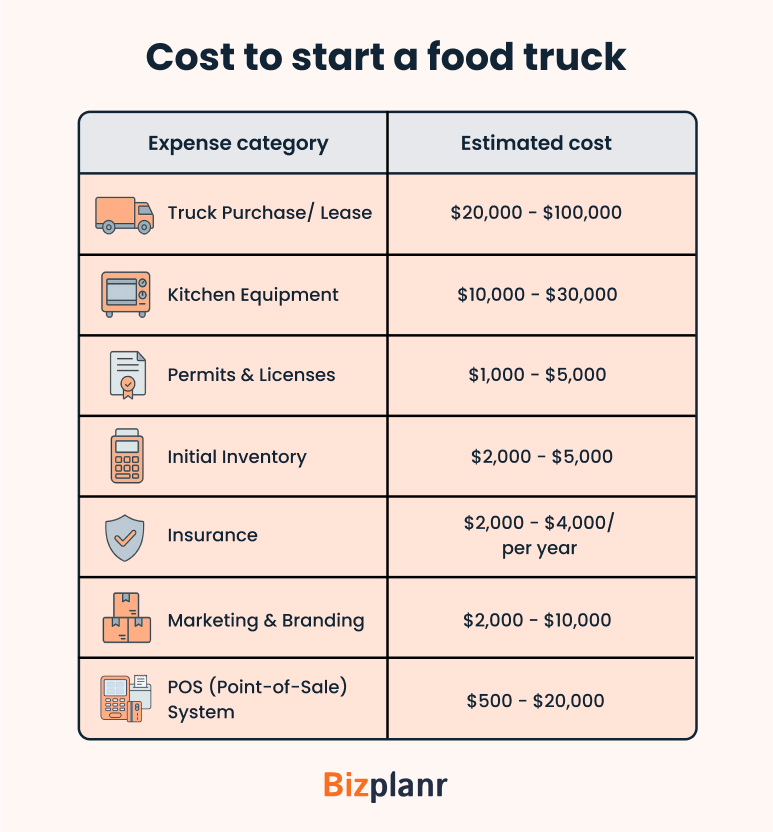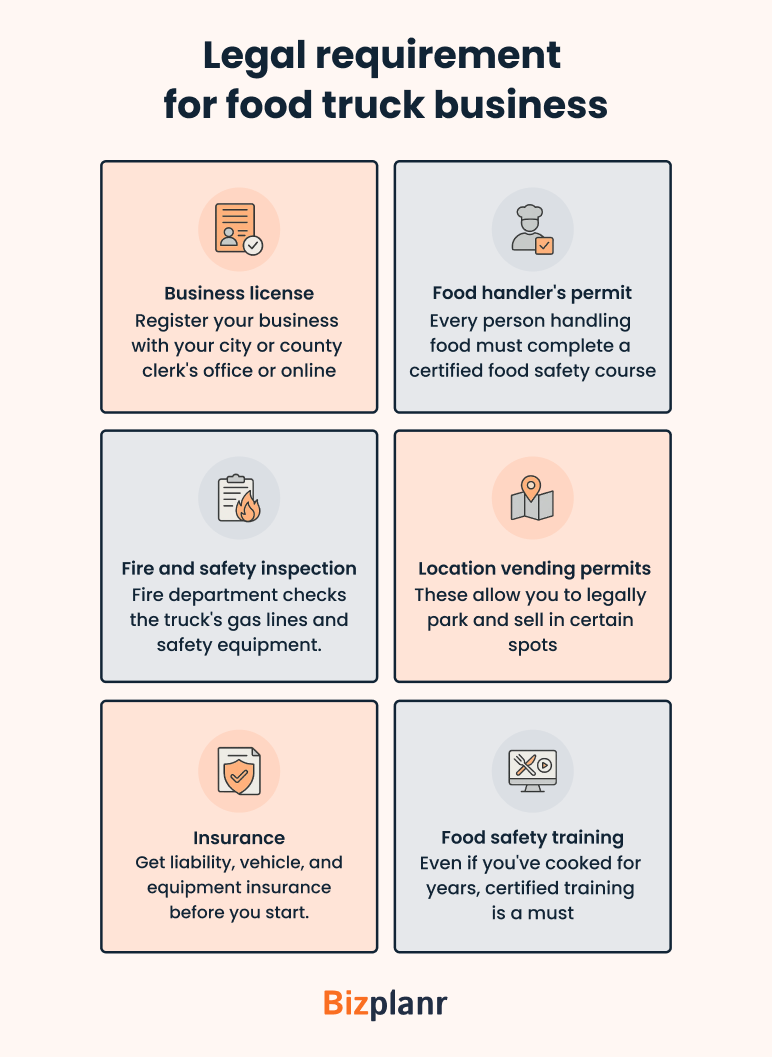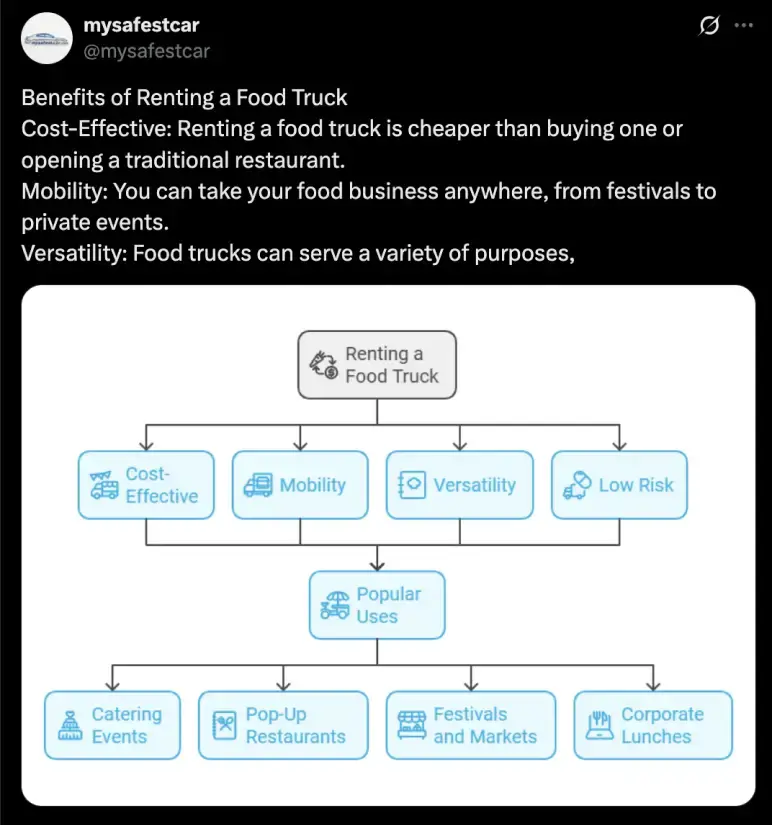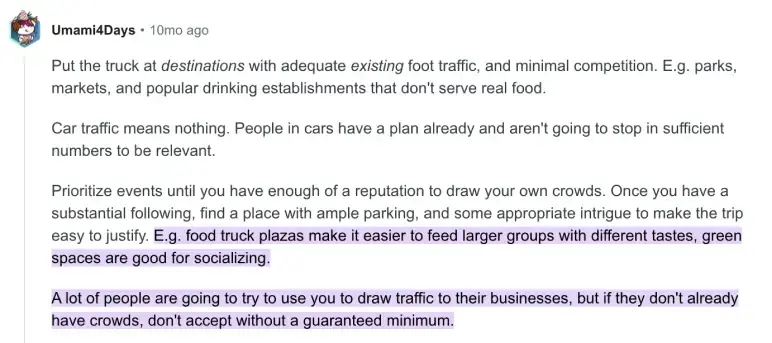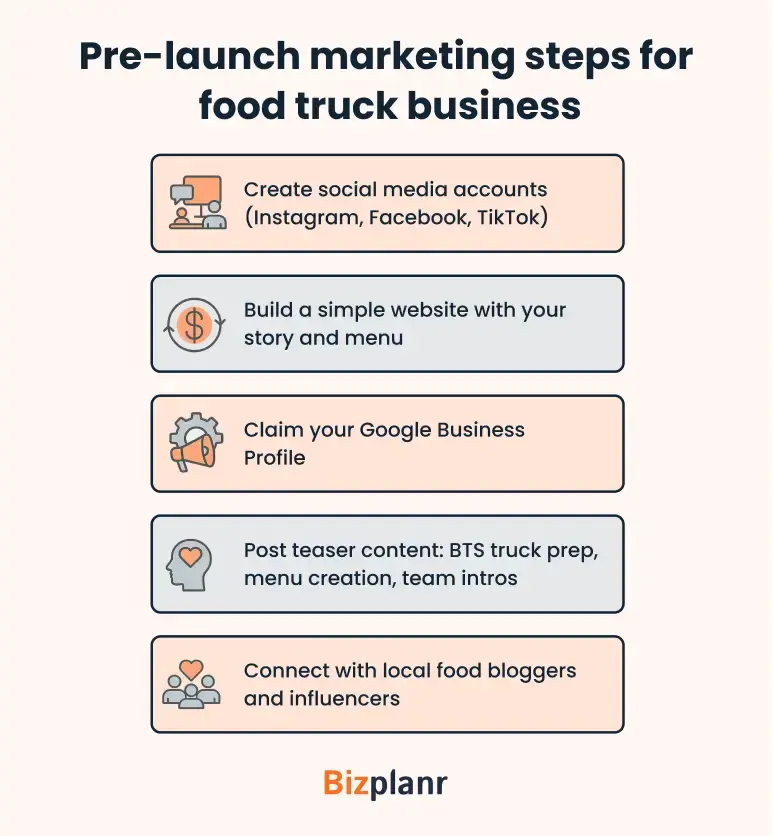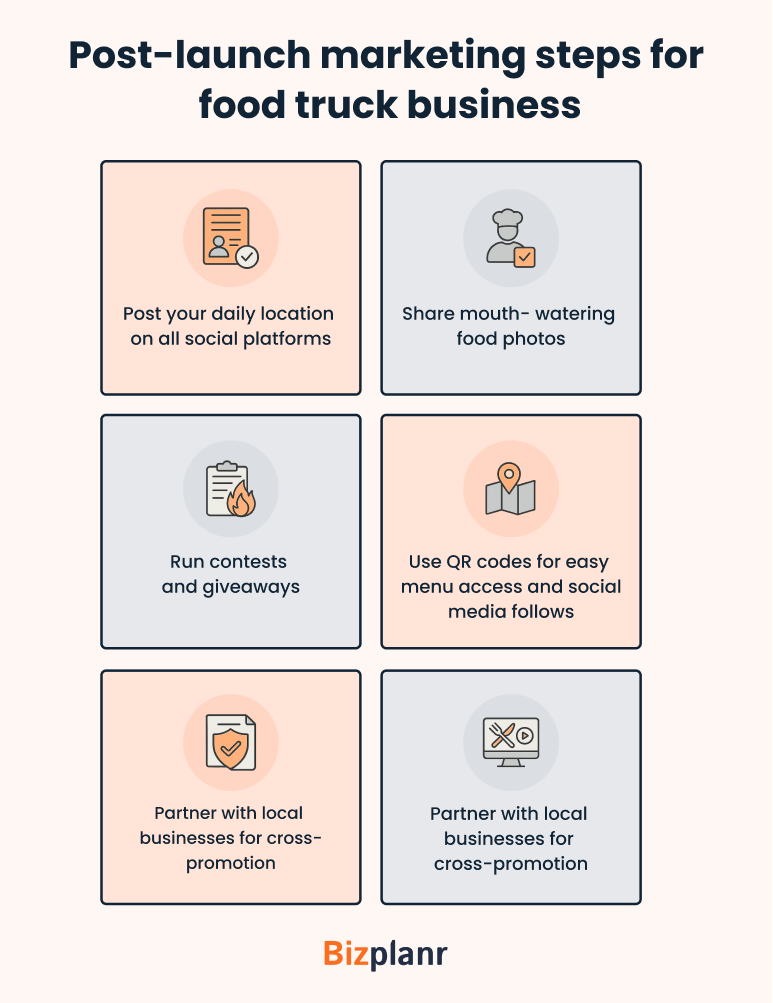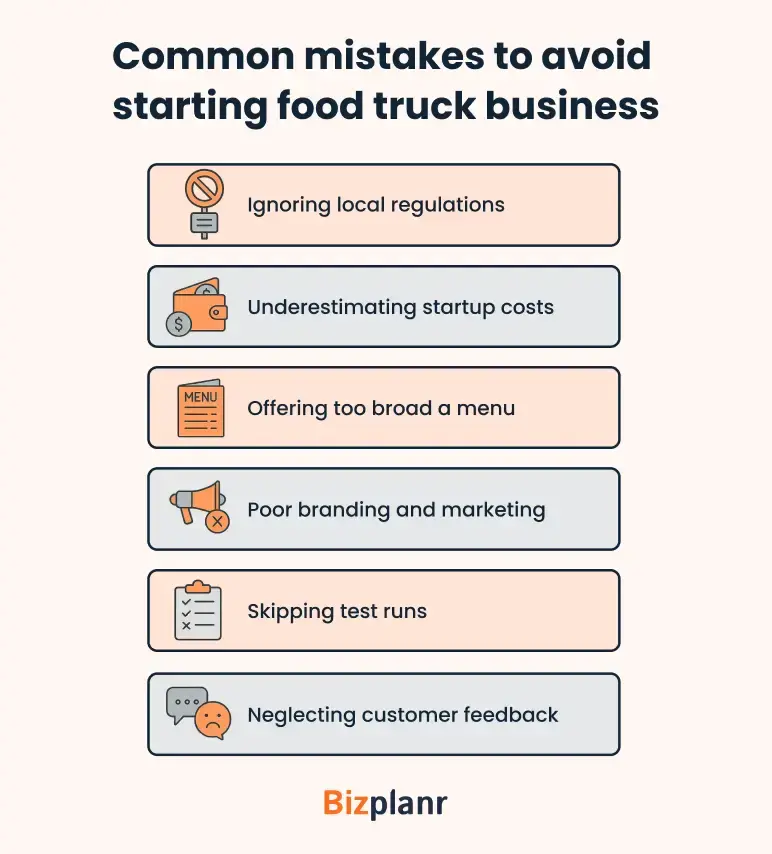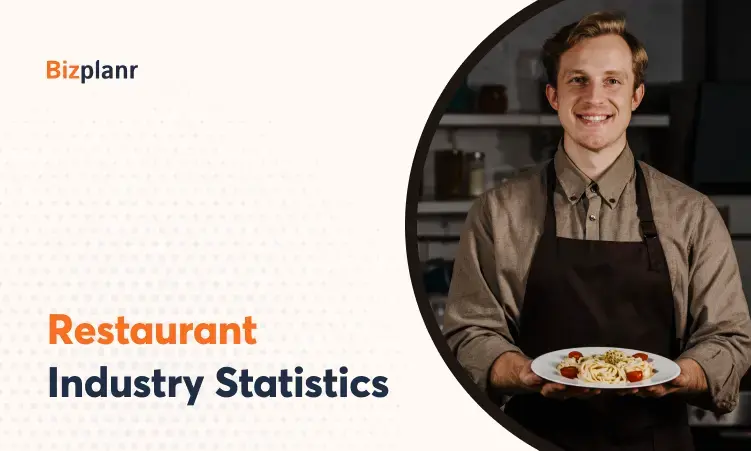“One day, I’m gonna open my own food truck.”
If you’ve caught yourself saying this while standing in line at a busy truck or binge-watching food truck shows, you’re not the only one. It’s one of those exciting ideas that feels doable… until you sit down and realize you don’t know where to start.
How much does it cost? What permits do I need? Where do I park?
Suddenly, that dream feels a little messy.
But here’s the thing—every successful food truck owner started with just an idea and questions. Hence, this guide will help you clear the noise and help you learn how to start a food truck business.
Let’s get started.
Step 1: Choose your niche and concept
Every successful food truck starts with a delicious idea. Begin by deciding what type of food you’ll serve—and be specific! Don’t just say “I’ll sell burgers” or “I’ll make Chinese food.” Go deeper.
Think along the lines of:
“Tex-Mex fusion tacos with plant-based options”
or
“Loaded gourmet fries with international toppings”
The clearer your concept, the easier everything else gets—your truck name, menu design, equipment, and even the kind of customers you’ll attract.
Next, do a bit of local market research. Attend food truck festivals or weekly food truck meet-ups in your city. Browse Yelp and Google reviews for existing trucks to see what’s popular (and what people complain about).
Hop on Reddit or local foodie Facebook groups to discover cuisine gaps—is your city craving a late-night dessert truck or a vegan lunch option? By scoping out the scene, you can refine your concept to offer something unique or underrepresented.
Step 2: Draft a business plan
Before you hit the streets, you’ll want to map out a game plan for your food truck venture. A food truck business plan might sound formal, but it’s basically a roadmap for turning your idea into a profitable business.
Here’s a simple checklist you can follow. Keep it clean, clear, and on one page if you can—you’ll thank yourself later.
- Your concept: What you're selling and what makes it special.
- Target market: Who are your ideal customers? Office workers? College students? Families at weekend markets?
- Startup costs: How much money you'll need to get started (we'll break this down in Step 3)
- Marketing plan: How you'll attract customers (social media, word-of-mouth, events)
- Financial projections: What you expect to earn in your first year.
Including these essentials in your plan will give you a clear head, realistic expectations, and a solid direction to follow.
Get Your Business Plan Ready In Minutes
Answer a few questions, and AI will generate a detailed business plan.
Step 3: Calculate the cost of starting a food truck
One of the biggest questions aspiring owners ask is, “How much does it cost to start a food truck?” The answer: It depends, but it’s not exactly pocket change. Starting a food truck involves several upfront expenses.
However, studies show it can take several months to get everything up and running, and it might cost you between $40,000 and $150,000, by the time you're fully set.
As per Forbes food truck business may cost you $125,000 or above depending on your kitchen equipment, truck purchase, and inventories.
Here's how that breaks down:
Tip: Start a lean—partner with a local café or commissary kitchen to use their prep space instead of building everything in your truck. Starting small keeps costs manageable.
However, if you’re tight on budget or wondering how to start a food truck with no money, consider:
- Crowdfunding: Platforms like Kickstarter or GoFundMe let you raise money from friends, family, and future customers.
- Business grants or loans: Check local government small business programs.
- Pop-ups & markets first: Start with temporary stalls at farmers markets or events to build your brand and save up for a truck.
- Rent a food truck: Some cities have rental kitchens on wheels. Test your concept for a few months before investing big.
Step 4: Fulfill the legal requirements and permits
Running a food truck means you’ll be dealing with bureaucracy—sorry, there’s no way around it. Each city and state has its own set of permits, licenses, and regulations for mobile food businesses.
Operating without the proper permits can result in hefty fines or having your truck shut down, so let’s avoid that! Here’s a quick list of what you’ll need, plus where and how to get them:
Note: Requirements can vary a lot depending on where you are. Some places might require commissary kitchen agreements, parking permits, or additional zoning clearances. Hence, check with your local health department and visit the SBA.gov website for city/state-specific guidance.
Follow the rules, keep your permits renewed, and you’ll stay on the right side of the law.
Step 5: Secure your truck and equipment
There are a few ways to get your hands on a food truck, and each comes with its own pros and cons. Let’s break them down:
| Price Range | Pros | Cons | Best For | |
|---|---|---|---|---|
| Buy New | $100,000–$200,000+ |
|
|
Long-term owners ready to invest |
| Buy Used | $50,000–$100,000 (varies) |
|
|
Budget-conscious owners with some mechanical know-how |
| Lease | $2,000–$4,000/month (avg) |
|
|
Testing concepts or short-term operations |
However, if you’re thinking about buying a new or used food truck, be sure to check out online marketplaces like UsedVending, Roaming Hunger, and Craigslist. They regularly list both new and pre-owned food trucks for sale.
Furthermore, you can even own a food truck from local companies that build or refurbish trucks. Additionally, a few cities offer rental food trucks for pop-ups or seasonal events, which are great for testing the waters.
When buying a food truck, focus on these key features:
- Grill or flat-top griddle: Essential for burgers, tacos, sandwiches, and more.
- Deep fryer: Great for fries, chicken, or other crispy favorites.
- Cold storage: As mentioned, fridges and freezers keep your ingredients safe and fresh.
- Prep tables: For assembling meals quickly and efficiently.
- Steam tables or warmers: To keep food hot during service.
- Handwashing sink and 3-compartment sink: These are usually required by health departments.
Step 6: Find the right locations
Once your truck’s ready to roll, the next big decision is where you’re going to park and sell. Your location can make or break your day.
Here are two smart location strategies you should try for your food truck business:
1) Permanent spots
You stick to one regular location daily (like outside an office park or market plaza). Good for building a loyal crowd, but it can get dull if foot traffic dips.
2) Rotating schedules
You move between popular areas throughout the week—office districts on weekdays, college campuses during lunch hours, and breweries or parks on weekends. It keeps things fresh and helps you reach different crowds. Using tools like Google Route Planner can also help you plan the most efficient routes between locations.
Consider choosing the following locations:
- Office districts during lunch hours
- College campuses
- Brewery parking lots (many breweries welcome food trucks)
- Shopping centers
- Construction sites
- Special events and festivals
Step 7: Develop your menu
Time to talk about the heart of your business: The menu! Crafting a food truck menu is a balancing act between offering something exciting to attract customers and keeping it focused enough to execute well in a tiny kitchen.
The most successful food trucks usually have relatively small menus—about 4 to 6 core items, and here’s why: A limited menu means you can perfect each item, serve customers faster, and manage your inventory and costs better.
Here are a few tips you should consider while planning your menu:
- Choose items that share ingredients to reduce waste
- Focus on high-margin items (food cost should be 25-35% of the selling price)
- Make sure everything can be prepared quickly
- Consider packaging—will it travel well?
- Include one "Instagram-worthy" item for social media buzz
Step 8: Set up operations and hire your team
Running a food truck is a whirlwind of activity. It’s not just cooking—it’s prep, driving, setting up, taking orders, handling payments, cleaning, and restocking—often all on the same day.
Especially early on, you might be wearing many hats (chef, cashier, driver, janitor… maybe all of the above!). That’s okay, but it means you need to set up efficient operations to keep the show running smoothly.
Let’s break down a typical day in a food truck owner’s life:
- Morning: Prep ingredients, stock supplies, and drive to location
- Service: Take orders, cook, and serve customers
- Evening: Clean equipment, restock for tomorrow, and drive back to base
Now, about hiring your team—for most trucks, you'll need 2-3 people:
- You (owner/manager): Oversee everything
- Cook: Handle food preparation
- Cashier: Take orders, handle payments, and interact with customers
Always look for versatile, reliable people who aren’t afraid of a fast-paced, sometimes cramped environment. Moreover, multitaskers are gold; hence, hiring someone who can handle the grill one minute and take orders the next is worth keeping.
Step 9: Marketing your food truck
Marketing is what ensures people actually show up to buy your tasty creations. So, let’s split your marketing programs into two simple stages: Pre-Launch and post-launch.
Pre-launch
These are the few key marketing steps you must consider before officially launching your food truck business:
Post-launch
Once you’re rolling, stay active and connected:
Step 10: Launch your truck
You’ve handled the planning, permits, truck setup, menu, and marketing—now you launch your food truck!
Here’s how to kick things off smoothly:
1) Start with a soft launch (Week 1)
Do a quiet test run before your official grand opening. Park in a low-pressure spot like a friend’s business, a local park, or a weekend market.
Why?
It lets you test your setup, workflow, and menu without the stress of a huge crowd. Plus, you can iron out any hiccups before the big day.
2) Then, plan a grand opening (Week 2-3)
When you’re ready, go all out. Here are a few simple but effective ideas:
- Plan a big celebration
- Offer "first 50 customers" deals or free samples
- Invite local media and food bloggers
- Partner with local influencers for a wider reach
- Document everything for social media
Remember to take lots of photos and videos of your food, your team, happy customers, and your truck in action. Post them on your social pages and tag your location.
Importantly, ask customers what they love and what you could improve. Honest feedback on day one is gold for fine-tuning your menu and service.
6 Common mistakes to avoid
Many new food truck owners overlook key details that can quickly derail the business.
1) Ignoring local regulations
Not knowing the permit, zoning, or parking rules can get you fined or shut down fast. Thus, always get the required licenses, follow parking rules, and renew everything on time.
Being shut down for a preventable permit issue is a costly (and embarrassing) mistake.
2) Underestimating startup costs
It’s easy to focus just on the truck cost and forget the multitude of other expenses (permits, maintenance, supplies, generator fuel, commissary rent, etc.) Remember, these hidden expenses can sneak up if you don’t plan properly.
3) Offering too broad a menu
Trying to serve everything—slows down service, complicates preparations, and raises food waste. Remember, trucks that succeed typically specialize. Hone in on a concise menu that you can nail every time.
4) Poor branding and marketing
Without a strong brand, clear truck design, and active social media, it’s tough to stand out. Moreover, if your truck doesn’t stand out visually or you have zero online presence, many potential customers will simply never notice you.
5) Skipping test runs
Not doing a soft launch means risking big issues on your opening day. A quiet trial run helps you catch workflow problems and fine-tune your timing. Encourage honest reviews—they’ll help you grow and adjust your menu or service.
6) Neglecting customer feedback
Dismissing early feedback can lead to missed opportunities for improvement. Post your weekly location plan on social media so people always know where to find you.
Conclusion
And there you have it! We’ve walked through everything you need to know about how to start a food truck, from picking your niche and planning your budget to getting permits, finding the perfect locations, and nailing your grand opening.
As you move forward, expect new challenges like managing daily operations, handling customer rushes, and keeping your brand fresh and visible. But with a smart plan and a solid routine, you’ll find your rhythm on the road in no time.
To make things even easier, platforms like Bizplanr can help you create a professional food truck business plan in minutes—so you can stay focused on what you do best: serving great food and building a loyal crowd.
Best of luck as you launch your dream on wheels!
Get Your Business Plan Ready In Minutes
Answer a few questions, and AI will generate a detailed business plan.
Frequently Asked Questions
How much does it cost to start a food truck?
Starting a food truck typically costs around $1,25,000 or more depending on your truck, equipment, and permits.
Can you run a food truck without a license?
No, operating without proper licenses and permits can lead to heavy fines and shutdowns.
How do food trucks find locations to operate?
Food trucks often rotate between high-footfall spots like office parks, campuses, breweries, and local events, guided by city regulations.
How profitable is a food truck?
Profit margins typically range from 10% to 25%, with many trucks earning $100,000–$250,000 annually depending on menu, location, and demand.
How to start a food truck with no money?
Yes—options like crowdfunding, food truck rentals, pop-ups, and small event catering help you start lean without huge upfront costs.
